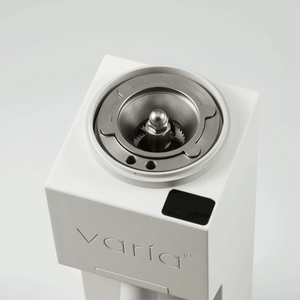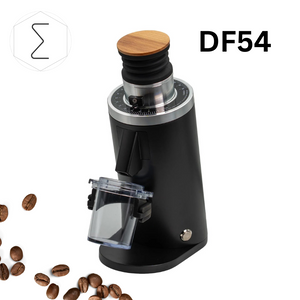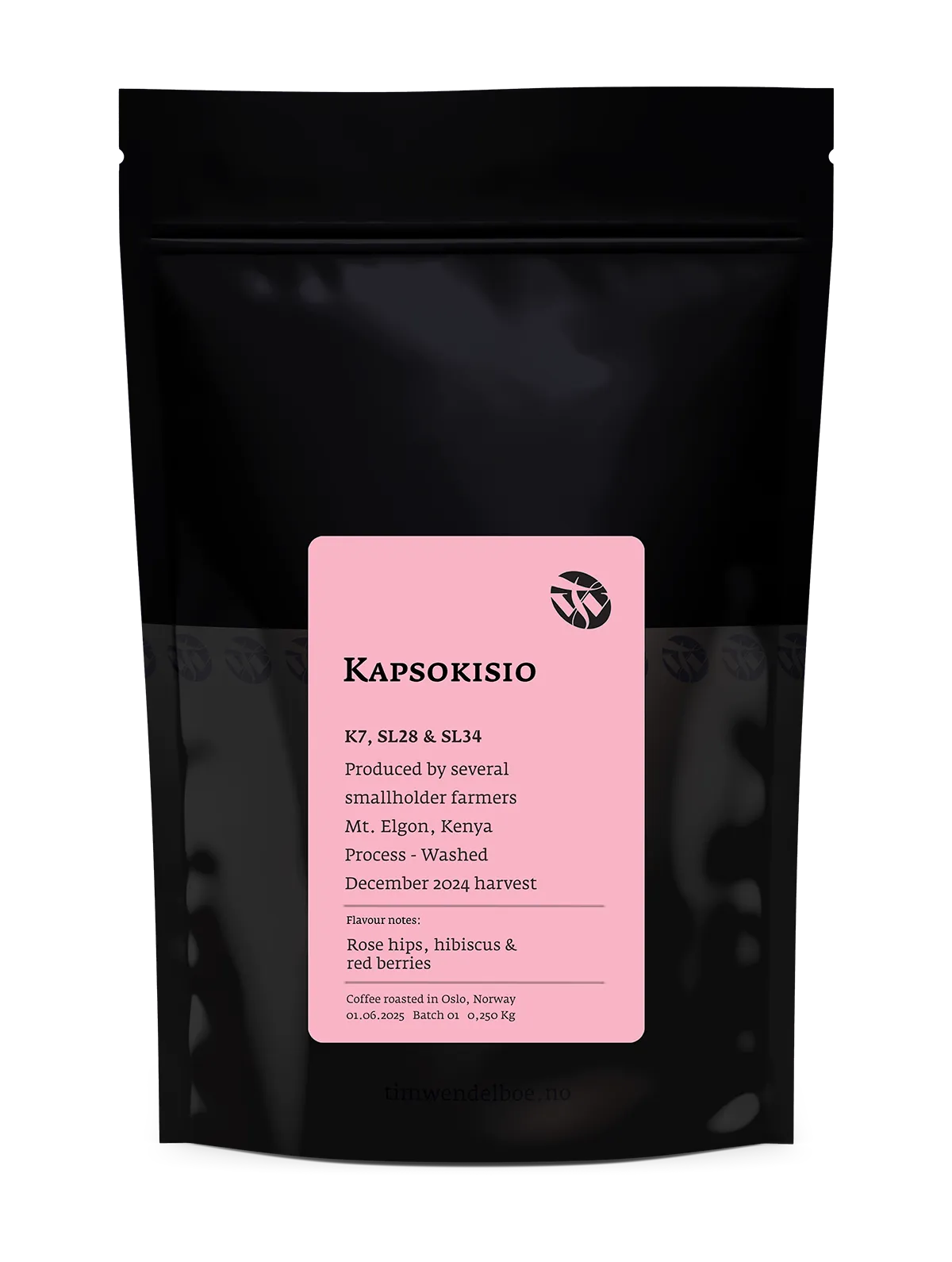Anbieter Tim Wendelboe
Kapsokisio - Washed Kenya, K7 SL28 & SL34
Origin - Kenya, Mt. Elgon
Variety - K7, SL28 and SL34
Producer - Several Smallholder Farmers
Process Method - Washed
Roast Date (Standard 0-6 Weeks) -
Roast Date (Rested) -
Beschreibung
Finca Tamana – Variedad Colombia
Variedad Colombia makes up the majority of the cultivars grown at Finca Tamana and serves as a reference point for the farm’s quality. Tim Wendelboe considers this lot the benchmark expression of the terroir. Expect a caramel-like sweetness (or panela, as it's known in Colombia), with a clean, smooth mouthfeel and subtle notes of fruit and herbs.
Picking & Sorting
Cherries are selectively hand-picked by trained workers under the supervision of producer Elias Roa. Only ripe cherries are harvested. Further hand-sorting ensures consistency before processing begins, with underripe and damaged cherries removed.
Kenya – Kapsokisio AA
This lot from the Kapsokisio wet mill in Kenya is a striking example of the region’s best qualities. Tim Wendelboe highlights its vibrant profile, with intense notes of rhubarb, rose hips, hibiscus, and fresh red berries.
Picking & Sorting
Coffee cherries are typically hand-picked by smallholder farmers and their families. Upon arrival at the wet mill, the cherries undergo a rigorous hand-sorting process. Ripe, high-quality cherries are separated and placed into dedicated hoppers, while underripe or damaged cherries are sorted out.
Depulping, Fermentation & Washing
Cherries are depulped using an Aagard disc pulper—an older machine that uses water and gravity to separate beans by density. The densest beans are channelled into specific fermentation tanks where they undergo dry fermentation for 12–16 hours. This process is carefully timed to break down the mucilage without compromising the cup profile. After fermentation, the parchment coffee is washed thoroughly in clean water and re-graded by density. Higher-quality, denser beans are kept separate from lower-grade lots for drying.
Drying Process
Drying takes place on raised beds, where parchment coffee is carefully monitored. Throughout the day, beans are raked to ensure uniform drying. To protect the coffee from heat damage, drying beds are shaded during peak sun hours and covered at night to prevent moisture from condensation. Drying typically takes 10–14 days, concluding when moisture levels reach 10–12%. Once dried, the coffee is conditioned in storage bins before moving on to the dry mill.
Shipping & Storage
All coffees sourced from Kenya by Tim Wendelboe are vacuum packed at origin to preserve quality during transit and storage in Norway.
What does 'Filter' or 'Espresso' Roast mean?
Typically filter is roasted lighter than espresso, though this is not always the case. Several factors play into what brands a Manhattan coffee as 'filter' or 'espresso', which includes the roast profile - i.e. how the beans are roasted, not just how developed a roast it is. It doesn't preclude you from using the beans for espresso though!


